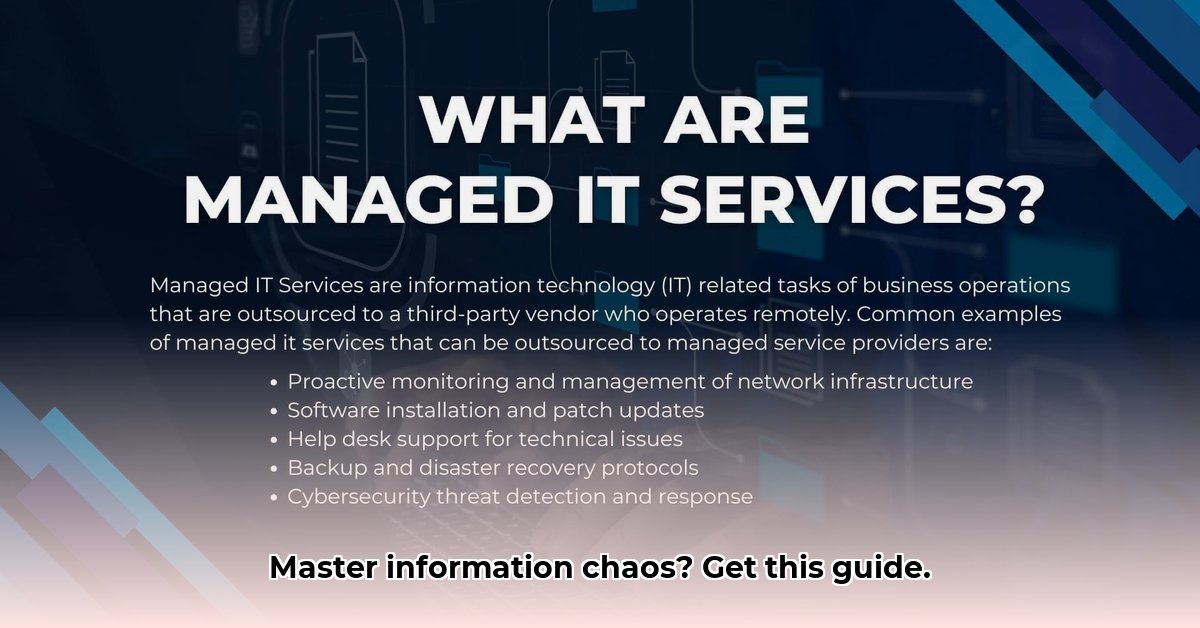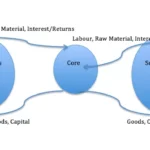The information landscape is constantly evolving, demanding agility and strategic foresight from information professionals. This comprehensive guide equips you with practical strategies to navigate the complexities of modern information services management, ensuring relevance, value, and sustainability in the face of dynamic technological advancements and user expectations.
Strategic Planning: Your Roadmap to Success
A robust strategic plan is the cornerstone of effective information services management. It’s more than a static document; it’s a dynamic roadmap that guides your organization through the evolving digital terrain. This plan should articulate clear goals, outline resource allocation strategies, define key performance indicators (KPIs), and incorporate mechanisms for adaptation in response to technological advancements and shifting user needs. Critically assess your organization’s current priorities and envision its future trajectory. Where do you see your information services in five years? Ten years? Answering these fundamental questions is paramount to crafting a winning strategy. Consider incorporating scenario planning to anticipate potential disruptions and develop proactive mitigation strategies.
Embracing Agility: Navigating the Shifting Sands of Information
In today’s rapidly changing technological environment, rigidity is a recipe for obsolescence. Agile methodologies, characterized by iterative development, continuous feedback loops, and a collaborative team approach, empower information services to respond effectively to shifting priorities and unexpected challenges. This adaptability is paramount for navigating the dynamic information landscape. Embrace the LEGO brick approach: build, test, iterate, and rebuild as needed, rather than adhering to a rigid blueprint. This flexible mindset fosters innovation and allows your team to nimbly adapt to evolving user demands and technological advancements.
User-Centricity: The Heart of Information Services
User needs should be the driving force behind every decision in information services management. Regularly assess the user experience: Are your services intuitive, efficient, accessible, and equitable? Implement robust feedback mechanisms to gather user input and actively incorporate this feedback into service design and refinement. Conduct user surveys, organize focus groups, and analyze usage data to gain a deep understanding of user behavior and preferences. Satisfied users are not merely a desirable outcome; they are a key indicator of the effectiveness and value of your information services.
Investing in Your Team: Cultivating Expertise and Innovation
Your team is your most valuable asset. Invest in their professional development through targeted training programs, mentorship opportunities, and continuous learning initiatives. Foster a collaborative and supportive work environment that encourages innovation and knowledge sharing. Identify emerging skill gaps and proactively address them through professional development programs. Empower your team to explore new technologies and methodologies, fostering a culture of continuous improvement and adaptation. A skilled, motivated, and well-equipped team is essential for navigating the complexities of the modern information landscape and driving organizational success.
Leveraging Technology Strategically: Maximizing Impact and Minimizing Risk
Technology is a powerful tool for enhancing efficiency, expanding reach, and driving innovation in information services. However, it’s crucial to approach technology adoption strategically. Conduct thorough cost-benefit analyses before investing in new technologies, considering their alignment with your strategic goals, their impact on existing infrastructure, and their potential for long-term sustainability. Prioritize interoperability and data security in your technology choices. Develop a robust technology roadmap that outlines your organization’s technology vision and guides future investments.
Managing Risk: A Proactive Approach to Resilience
A comprehensive risk assessment is essential for identifying potential threats to your information services and developing effective mitigation strategies. Proactively address potential disruptions, such as system failures, data breaches, cybersecurity threats, budget cuts, and natural disasters. Develop detailed contingency plans to minimize the impact of unforeseen events and ensure business continuity. Regularly review and update your risk management plan to reflect the evolving threat landscape.
Continuous Improvement: The Engine of Excellence
Information services management is a continuous journey of learning, adaptation, and refinement. Regularly evaluate your workflows, analyze performance data, identify areas for improvement, and adapt your strategies accordingly. Embrace data-driven decision-making to inform adjustments and optimize resource allocation. Foster a culture of continuous improvement within your team, encouraging experimentation, innovation, and a commitment to lifelong learning.
Sustainability: Balancing Environmental, Economic, and Social Responsibility
Sustainability in information services encompasses environmental responsibility, economic viability, and social equity. Define clear sustainability goals and develop metrics to track your progress. Implement strategies to reduce energy consumption, minimize waste, optimize IT infrastructure costs, and promote responsible data handling practices. Consider the social impact of your services and strive to ensure equitable access to information for all users.
Implementing Agile: A Practical Approach
Agile methodologies offer a flexible and adaptable framework for managing information services projects. Successful Agile implementation requires careful planning, effective team building, and a commitment to iterative development. Begin with pilot projects to gain practical experience and refine your approach. Learn from successful case studies, such as Xcel Energy’s implementation, which demonstrated significant cost savings and faster project delivery through Agile adoption. Adapt Agile principles to your specific organizational context and project requirements.
By embracing these principles and tailoring them to your unique circumstances, you can effectively navigate the challenges of the digital age and ensure the long-term value, relevance, and sustainability of your information services.
- Unlocking 2-Letter Words with U: The Definitive Guide - April 4, 2025
- Unlock Words with the Letters THREE: Top Unscramble Tools 2025 - April 4, 2025
- Master Scrabble: X & Z Words for High Scores - April 4, 2025
















